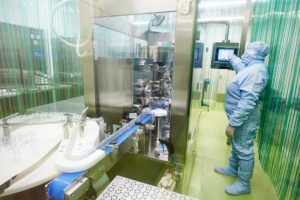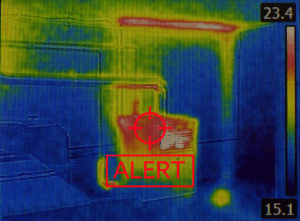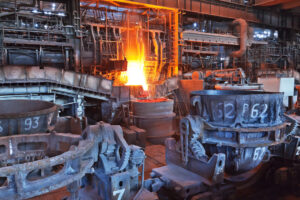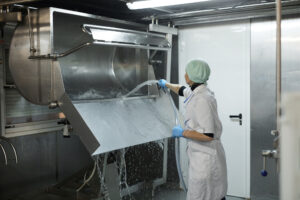In the past 50 years, a lot has changed in video monitoring for the mining industry. These changes may not be obvious, however, the ins and outs of camera systems have changed a lot and will continue to do so. At Opticom, we’ve seen and implemented these changes for our clients in the mining industry.
Moreover, we always keep an eye on the future because we want our clients to have the features they need as soon as the technology to implement them allows it.
Today, we’re looking at the future of video monitoring in the mining industry: what does it hold in store beyond fads? What do mine operators really need from their video monitoring solutions?
4 Key Trends in Mining Video Monitoring
At Opticom, we monitor our clients’ needs carefully precisely so we can work on developing technology that serves their actual needs. Based on our research, this is what the video monitoring systems of the future will have to provide for users in the mining space.
1. High(er)-Resolution Cameras to Combat Poor Visibility Areas
As mining operations become more complex and spread across larger geographical areas, the demand for high-resolution cameras is set to increase. The next generation of video monitoring systems will feature ultra-high-definition (UHD) cameras with resolutions of 4K and beyond.
These cameras will provide crystal-clear images in the roughest of conditions, allowing you to zoom in on even the smallest details without losing clarity. This level of detail is crucial in the mining industry, where the ability to monitor machinery, personnel, and environmental conditions accurately can make the difference between safe operations and catastrophic failures.
The higher resolution will also enable you to better identify potential hazards and anomalies, such as equipment wear and tear, structural integrity issues, or unauthorized personnel in restricted areas.
Moreover, high-resolution cameras will facilitate more effective monitoring of remote and difficult-to-access locations, reducing the need for manual inspections and minimizing the exposure of personnel to hazardous conditions.
2. More Video Streams: Comprehensive Coverage for Complex Operations
As mining operations expand and become more intricate, the need for multiple streams that can be captured and analyzed in real-time will also increase. This means that more cameras—each with more streams—will be deployed across a mining site.
These cameras will provide continuous monitoring of critical areas such as mining pits, processing plants, transportation routes, and storage facilities.
Side note: this is why it’s important to make sure that your video monitoring system is scalable. Even if you don’t need 50 cameras right now, you might need them soon. It’s usually more cost-effective to build upon an existing system than to start from scratch — this helps reduce your cost of ownership too.
Thanks to the advancements in network infrastructure and video compression technologies, you will be able to transmit and process multiple high-definition video streams simultaneously without compromising on quality or causing delays. This will allow you to have a complete, real-time view of the entire mining operation.
3. Increased Reliability to Ensure Continuous Video Monitoring in Challenging Conditions
One of the most critical aspects of video monitoring in the mining industry is reliability. Mining environments are notoriously harsh, with extreme temperatures, dust, moisture, and vibrations all posing significant challenges to the performance of camera equipment.
The future of video monitoring will be defined by the development of cameras and systems that are not only resistant to these conditions but also capable of operating continuously without interruption.
You’ve already seen that our cameras can survive and still work perfectly, even after being hit by a log. Opticom cameras are built for the harshest environments. You can even mount our cameras right on your machinery—they stand up to the vibration and debris of a mine…guaranteed.
4. Durability and Longevity: Long-Term Performance in Extreme Environments
Durability and longevity for video monitoring equipment on mining sites is vital, and most commercial cameras aren’t up to the job. In the future, we expect mines to opt for more rugged cameras, monitors, mounts, and other components.
In addition to physical durability, the software and firmware that power these cameras will also be designed for longevity. With over-the-air updates and remote diagnostics capabilities, these systems will be able to adapt to changing conditions and evolving security threats without requiring frequent physical maintenance or upgrades.
The Red Thread of Video Monitoring for Mining Companies: Focus on Operations
While process monitoring and security are very important in monitoring mining activities, the systems of the future will go far beyond that. They will empower the mine operator to be proactive rather than reactive.
In other words, your video monitoring system should help you enhance your operations, not just prevent thefts and trespassing.
At Opticom, we are very proud to say that our monitoring systems already help our mining clients do just that: improve their operations and optimize their costs. And we’re just getting started!
As we work on the next generation of video monitoring systems, you can find out how mining companies use our solutions to improve their processes from this series of articles:
- How remote mining operations can be streamlined with video monitoring
- How infrared video monitoring can prevent mining equipment failures
- How to enhance mining operations with video monitoring
Need similar results? We’re just a phone call or an email away. Reach out — we’d be happy to advise you on the video monitoring system that can take your mining operations to the next level. Bring the future to your sites today.







